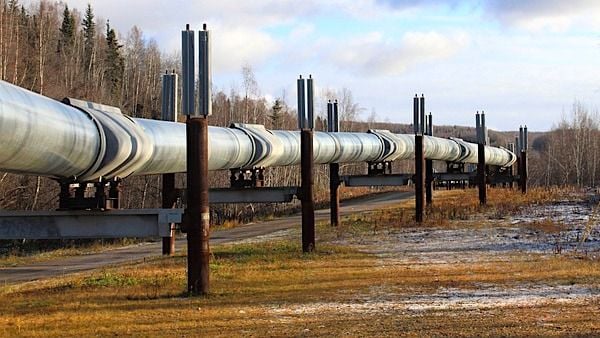Copyright wnd

In an era when the energy industry faces growing workforce challenges, nearly 80 educators from five states – Pennsylvania, Oklahoma, New Mexico, Texas, and California – traveled to Midland and Odessa, Texas, this fall to see the industry up close. The fourth annual Energy Educator Retreat, hosted by Coterra Energy, brought together high school and college instructors, industry partners, and workforce advocates with one shared purpose: connecting classrooms to the real-world careers that power America’s economy. The retreat began in 2022 as a small, informal gathering of educators and industry leaders who recognized a shared problem: How do we inspire young people to see the value in energy careers, particularly the technical jobs that ensure production runs safely and efficiently? That question has since grown into a national conversation. Each year, the Energy Educator Retreat has expanded, first to Oklahoma City in partnership with the Oklahoma Energy Resources Board (OERB), and then to Houston in collaboration with San Jacinto College and the Energy Education Foundation (EEF). Each location offers a new perspective on the industry’s complexity, encompassing exploration and production, refining, and field services. This year, we convened in the Permian Basin, the powerhouse of American energy. Much of the event took place at the Permian Basin Petroleum Museum, the largest of its kind, where participants explored hundreds of exhibits tracing more than a century of energy innovation. The museum’s grounds, filled with drilling rigs, early pump systems, and production equipment, tell a story of relentless adaptation and progress. There is no other place that captures both the history and future of this industry in such vivid form. But the real impact came from the hands-on learning. Educators climbed into NexTier’s pumping unit and electric wireline unit, operating real controls and seeing how technology is reshaping completions work. Kodiak Gas Services demonstrated how its Bears Academy trains technicians on compressor operations. Companies such as NOV, SLB, and Cactus Flow Products introduced specialized tools and field systems, showing how precision and data integration have become integral to modern operations. Among those in attendance was Mark Golden, an educator at Dallas High School in Pennsylvania and an adjunct instructor for Lackawanna College’s School of Petroleum and Natural Gas. Golden has attended every Energy Educator Retreat. Using lessons from these events, he established clear pathways for students to enter the energy industry, helping them earn certifications, secure internships, and launch technical careers. He also serves as part of an educator cohort developing the Virtual Reality Wellsite Training System, further expanding the program’s reach and measurable impact. His work shows how one educator’s commitment can extend the retreat’s influence far beyond the event itself. For many educators, it was their first time this close to the modern oilfield. “Programs like this make STEM and career education real for students,” one participant said. “You can’t teach what you don’t understand – and now I can bring this experience directly into my classroom.” Beyond the equipment and demonstrations, the retreat also explored the human side of energy. A session dedicated to the often-overlooked profession of landmen opened with a nod to the new television series Landman, which captures the grit and complexity of the field. Three Coterra landmen shared their own experiences, including negotiating leases, managing regulatory compliance, and bridging the gap between property owners and operators. It was a candid look at the diverse pathways that make the energy sector function. Doug Terreson, a respected Wall Street analyst and author of Can’t Deny It: An Unlikely Wall Street Career and the Calls that Reshaped the Energy Industry, delivered the retreat’s keynote. He spoke about how the oil and gas sector has evolved over the last four decades — financially, operationally, and culturally, and the importance of leadership and data-driven decision-making in navigating change. His remarks echoed a central theme of the retreat: that the industry’s success depends not only on technology but on people who can think critically, act responsibly, and adapt to what’s next. Those people are increasingly difficult to find. Analysts from the International Energy Agency and the U.S. Department of Energy warn of an impending shortage of skilled field workers as experienced technicians retire and fewer young people enter the trades. From wellsite technicians and electricians to instrumentation specialists and welders, the demand for technical expertise is outpacing supply. That’s where career and technical education (CTE) programs and two-year degree pathways play a crucial role. These programs are essential pipelines for the next generation of workers. Yet, many schools lack the resources, partnerships, and firsthand exposure needed to show students the real potential of these careers. Through Coterra’s continued investments in CTE programs, dual-enrollment opportunities, and energy pathway initiatives, we work to close that gap and help educators bring the energy industry into their classrooms in tangible, inspiring ways. Ultimately, the Energy Educator Retreat isn’t about telling teachers what to teach. It’s about giving them the tools, access, and understanding to show students what’s possible. When they return home to their classrooms in Pennsylvania, Oklahoma, or New Mexico, they bring more than lesson plans; they bring perspective, stories, and confidence that energy education is not abstract. It’s real, relevant, and foundational to our nation’s success. Whether in a classroom in Scranton, a lab in Tulsa, or a compressor station near Carlsbad, we share the same goal: giving people the skills to build better lives and a stronger nation. Education and energy both exist to empower, and together, they’re fueling America’s future workforce.



